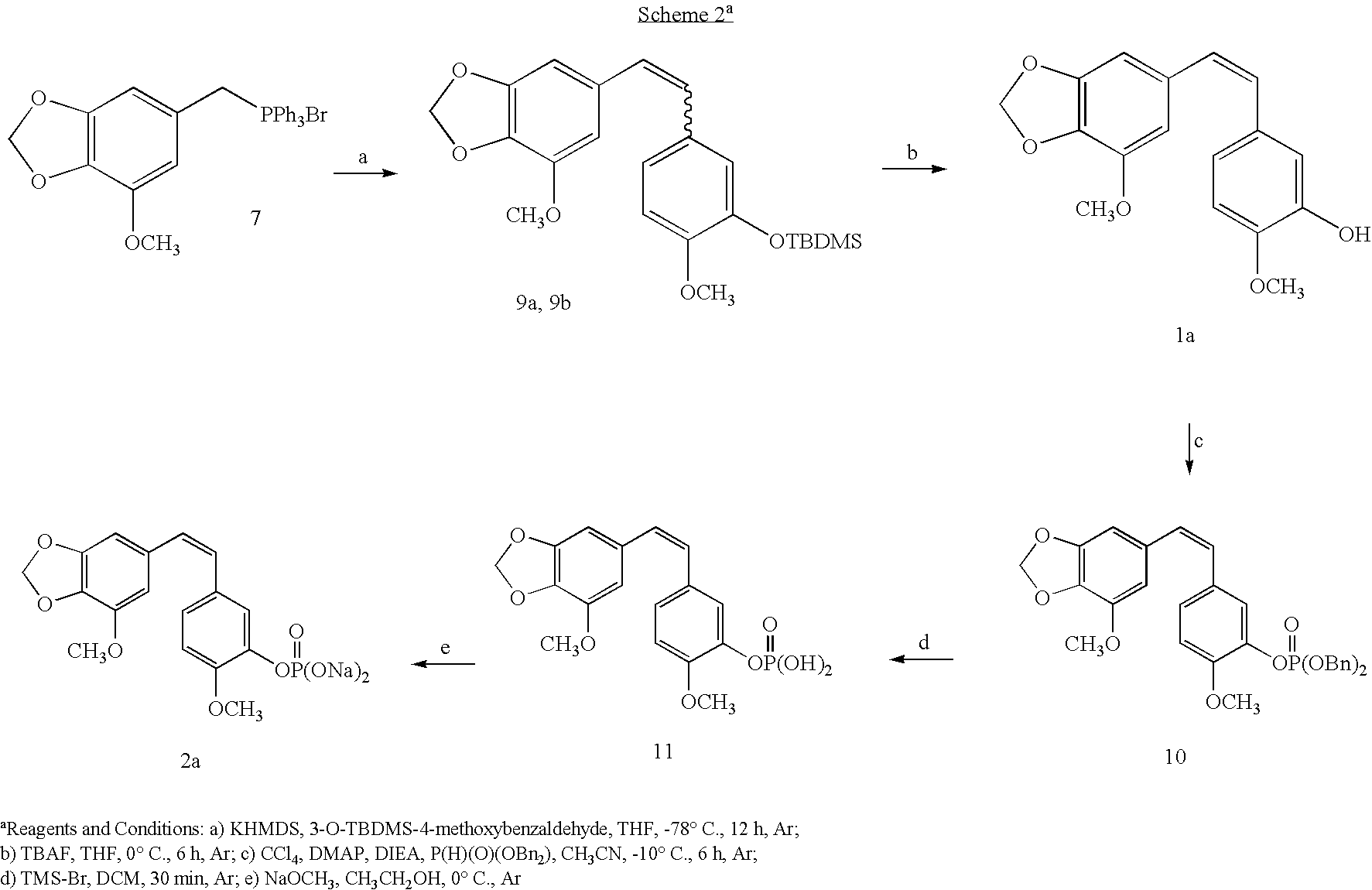Synthesis of combretastatin A-2 prodrugs
a technology of combretastatin and prodrugs, which is applied in the field of synthesis of combretastatin a2 prodrugs, can solve the problems of avascular tumors that are dormant or eventually undergo necrosis and shrinkage, and achieve the effect of efficient scale-up procedures
- Summary
- Abstract
- Description
- Claims
- Application Information
AI Technical Summary
Benefits of technology
Problems solved by technology
Method used
Image
Examples
Embodiment Construction
[0012]In order to obtain both combretastatin A-2 (1a) and its sodium phosphate prodrug (2a) the original synthesis (Pettit and Singh, 1987) of stilbene 1a was modified. Three major improvements were employed for this purpose. Firstly, the phosphonium bromide salt and the benzaldehyde precursors used in the Wittig reaction were reversed from the original synthesis to synthetic intermediates 7 and 8, which eliminated problems associated with the formation of the triphenylphosphonium bromide derived from isovanillin. Secondly, the Wittig reaction base used to treat phosphonium bromide 7 was changed from n-butyllithium to potassium hexamethylsilylamide (KHMDS). Current evidence suggested that the presence of lithium salts favors production of the trans isomer (Reitz, 1996). Pettit and Singh, (1987), reported a Z / E ratio of 1:16 in the original Wittig sequence leading to cis-stilbene 1a. Upon substituting KHMDS and otherwise similar reaction conditions, a Z / E ratio of 1:2 was obtained. T...
PUM
| Property | Measurement | Unit |
|---|---|---|
| solubility | aaaaa | aaaaa |
| solubility | aaaaa | aaaaa |
| solubility | aaaaa | aaaaa |
Abstract
Description
Claims
Application Information
 Login to View More
Login to View More - R&D
- Intellectual Property
- Life Sciences
- Materials
- Tech Scout
- Unparalleled Data Quality
- Higher Quality Content
- 60% Fewer Hallucinations
Browse by: Latest US Patents, China's latest patents, Technical Efficacy Thesaurus, Application Domain, Technology Topic, Popular Technical Reports.
© 2025 PatSnap. All rights reserved.Legal|Privacy policy|Modern Slavery Act Transparency Statement|Sitemap|About US| Contact US: help@patsnap.com


